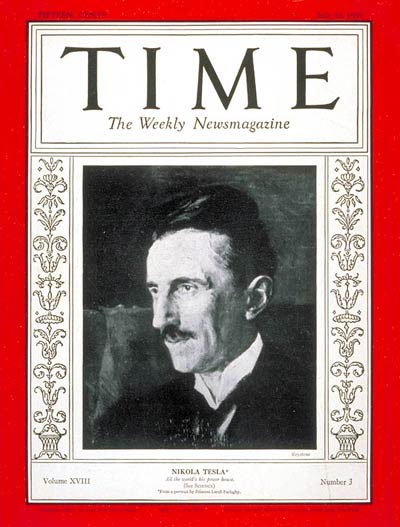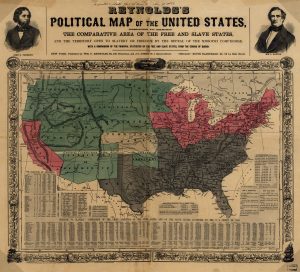Nikola Tesla, more commonly remembered as the inventor of technologies such as the Tesla Coil, was a Serbian-American Scientist, inventor, physicist, mechanical and electrical engineer. Tesla was born on July 10, 1856, in the Austro-Hungarian Empire, which is now known as present-day Luka, Croatia. As an adult, he studied both Mathematics and Physics at the University of Graz and philosophy at the University of Prague. In 1884, at the age of 28, Tesla immigrated to the United States in the search of both freedom and opportunity.1 In June of that same year, Tesla finally set foot in the United States, penniless, but still full of ambition fueled by his dream to revolutionize the world through advancements in electricity.
In the days following his arrival, Tesla was given the opportunity to meet with none other than Thomas Alva Edison, the inventor of the phonograph, the incandescent lightbulb, and the early motion picture camera, just to name a few. More notably, Edison was recognized for the invention of direct current, which was at the time the most popularly used form of electricity.2 His newfound fame distinguished him as a very important and influential person during that time. And Edison recognized the potential that Nikola Tesla possessed, and employed him to work under his supervision.
After months of working under Edison, Tesla began to form a close bond with him, earning the position and title of Edison’s apprentice. Being an apprentice and working closely on research and inventions with Edison himself, Tesla was able to test and further his knowledge on scientific inventions and eventually was able to test theories and inventions of his own. Unfortunately, with this expansion in his capacity of understanding, Tesla was able to analyze certain faults and options for improvements in Edison’s inventions. When he confronted Edison about possible improvements that could have been made to the functioning of direct current, Edison blatantly opposed any of the claims suggested by Tesla. Consequently, both men got caught up in an argument, and Tesla was coerced into resigning from working with Edison.3

However, Nikola Tesla’s improvements in terms of electricity drove him to establish a new form, known as the practical alternating current (AC) motor. This type of current functioned using two sources of alternating current that worked out of phase with one another by creating a rotating magnetic field that would serve as a motor.4 In addition to this, Tesla also introduced his own version of lightbulbs, commonly known as fluorescent light bulbs.5 With the introduction of the AC motor, a lighting system that proved to be more efficient than Edison’s, and a new type of lightbulb, Tesla had managed to slowly take out the competition that he had with Edison. As more people started investing in AC networks, the less people remained with Edison’s “alternate” direct current. With the help of investors such as Westinghouse and J.P. Morgan Jr., Tesla was able to dominate the market for electricity and rise to fame.6

Other advancements made by Nikola Tesla were in the medical field, namely, with medical practices using “Tesla Currents,” which used a form of electrotherapy to produce heat in tissues of the human body; and in other procedures such as “teslinization,” which is where Tesla Coils were used on patients to stimulate high frequencies of electric fields within the body. One of the more recognized inventions made by Tesla are the earliest forms of X-Ray machines.7 Today, we use x-rays in a great deal of medical procedures that require the need to further analyze the condition of patients in areas that are not immediately visible to the human eye. This breakthrough in medicine was made possible by the development of radio, wireless transitions of energy, the discovery of rays that could help penetrate the human tissue, and the use of Tesla currents in medical procedures.8 With these various types of practices and inventions, Nikola Tesla was able to effectively make his mark on the medical industry, most of which still exists in the equipment and practices we use today.
It is no secret that Nikola Tesla represents an ideal example of the American dream; a poor Siberian immigrant leaving everything behind and moving to America to pursue his dreams and making a difference. Undoubtedly, Nikola Tesla has proven to be one of the most influential scientific minds in the fields of medicine, physics, mathematics, and engineering. In his lifetime, he managed to do the things that many of wish to be able to do, which is to revolutionize the way we view the world through ingenuity, innovation, and persistence. Tesla has managed to make his mark on the world and leave his legacy in American History.
- L F. Haas, “Nikola Tesla (1856-1943),” Journal Of Neurology, Neurosurgery, And Psychiatry 72, no. 4 (Feb 2017): 526. ↵
- Guillaume de Syon, “Tesla: Inventor of the Electrical Age,” Canadian Journal Of History 49, no. 2 (August 2014): 347. ↵
- Jill Jonnes, Empires of light: Edison, Tesla, Westinghouse, and the race to electrify the world (New York: Random House, 2003), 50-79. ↵
- Ronald H. Bailey, “Tesla: the wizard who electrified the world,” American History, no. 2 (2010): 52. ↵
- Oliver Graydon, “Master of electrons and photons,” Nature Photonics 9, no. 6 (June 2015): 345. ↵
- Bernard Carlson, “Tesla: Inventor of the Electrical Age,” Publishers Weekly 260, no. 14 (April 8, 2013): 54-55. ↵
- Danijela Vučević , Drago Đorđević, and Tatjana Radosavljević, “Nikola Tesla and medicine: 160th anniversary of the birth of the genius who gave light to the world – part I,” Medicinski Pregled, Vol 69, No 9-10 (2016): 313. ↵
- Vladimir and Milan Baltić, “Nikola Tesla discovered ‘very special radiation’ or X-radiation,” Archive Of Oncology 15, no. 3-4 (Feb 2017): 100-105. ↵



38 comments
Faisal Alqarni
Hello Nahim, your description of of Teslas’ arrival reminds me of my own arrival in the U.S. I was full of hope as well for my future. I knew something about Edison’s inventions but never knew that Tesla was his understudy. This story it taught me one thing that one should never give up on their ideas despite his teachers opposition to his ideas Tesla he stuck to his idea of the Alternating Current AC system and because of this it led to very many wonderful inventions such as the X-ray machine. Indeed like you said it Tesla he is a great example of the American dream I will be sure to remember him in my times of questioning my ideas as an immigrant myself in this country. Thank you Nahim.
Mario De Leon
Very fascinating read. I have heard of Nikola Tesla but not in great detail. For example, I did not know that he was an immigrant to the United States. He is truly a great example of the American Dream. I find it funny how Edison gave Tesla his starts and they started as friends but then developed a rivalry. Tesla’s story is very inspiring especially because he was able to make such a big influence to science, medicine, and our everyday lives.
Cameron Mays
I always thought Tesla was probably the most underrated scientist and person ever. Throughout school and common culture, Thomas Edison is always the person talked and taught about the most, while Tesla probably did even more work than Edison, just never garnered the rewards from it as much. That’s why I was initially drawn to your article. You kept me interested by it’s organization and research, as you provided enough information in a very nice way. Your article has pretty much everything it needs. Nice.
Johnanthony Hernandez
Great article, not many find interest in Nikola Tesla and fewer would give him credit for a lot of the things we use today. We learned over and over the Thomas Edison was the revolutionary that brought us into the modern age, so to speak, but forget that Tesla played as big of a role in doing so. Most of what I have learned about Tesla has been through doing my own research or documentaries based on him, but what we do remember him for has ensured that he left his mark on society and as you said truly embodies what the American dream is.
Teresa Valdez
When I think of early electricity, my mind goes straight to Edison. I’m glad that light has been shed on the enormous contributions Tesla made to the advancement of electrical technology. The article is very informative and I like the way it portrays Tesla as a jack of all trades. Clearly this man was successful in pursuing the American dream. Excellent article!
Jennifer Pogue
Great article! Very well written and it is clear you conducted your research very well. Nikola Tesla was such an intelligent man and it is clear he contributed so much to make the world it is today. I almost feel sad for him because we all have learned about Edison, but it seems Tesla was left out of the text books. That said, you did a very good job teaching all your readers about Nikola Tesla!
Christopher Repka
Nahim, this article was really interesting! I was actually thinking about writing an article on Tesla prior to reading this, but you have done a wonderful job. Tesla is a fascinating figure in history, and contributed much to the field of science and engineering, yet few people know his name when compared to Edison. However, in recent years, I have noticed a hike in the frequency with which I hear Tesla’s name in popular history. Overall, good job on your article!
Alexis Soto
Good read! I had studied JP Morgan Jr because of his contributions to American industry. Along the way I learned of his relationship with Nikola Tesla. As a child we learned of Thomas Edison and his great contributions to science but I felt as though we barely covered Nikola Tesla. That being said I learned a lot from this article such as the fact that he was an immigrant and had tried to work with Edison not directly compete with him.